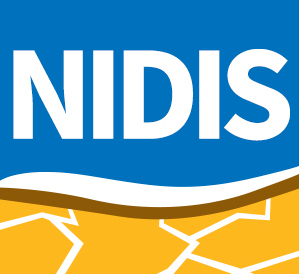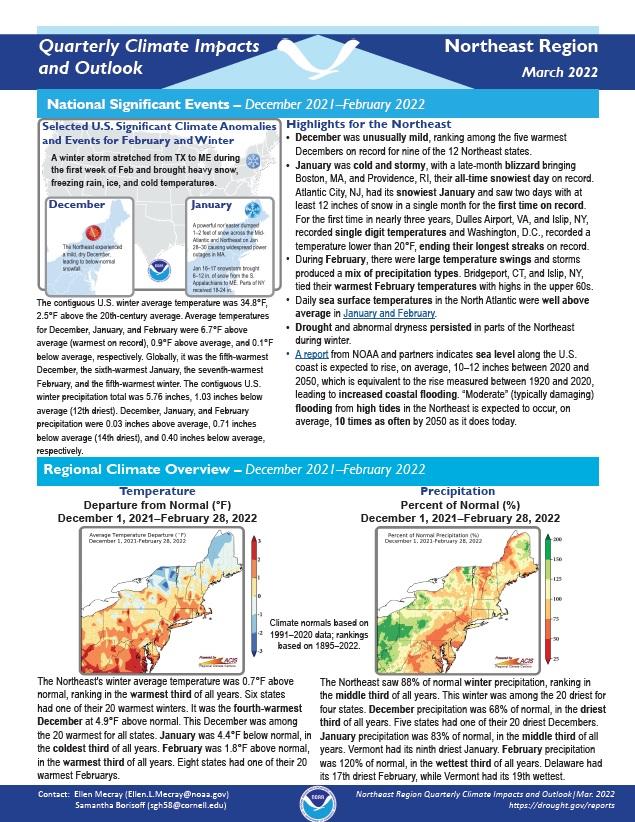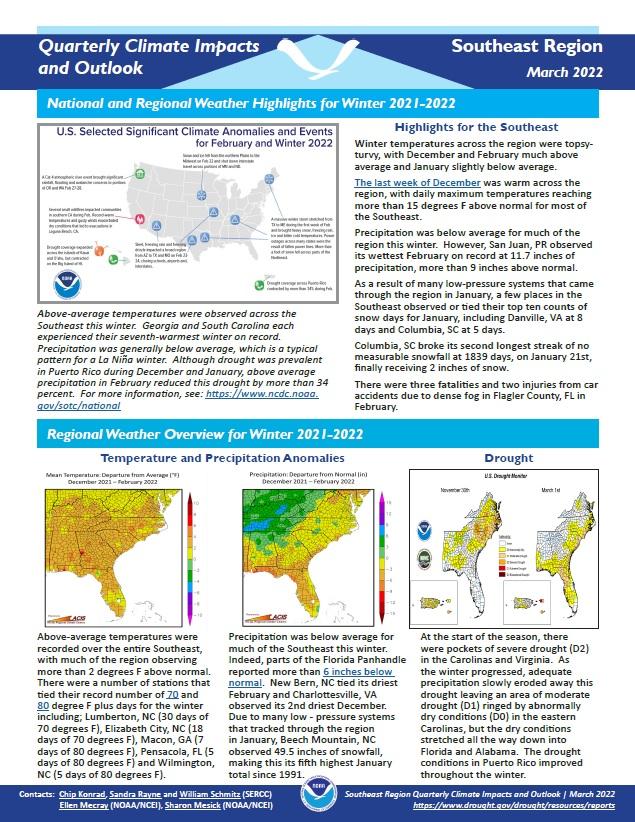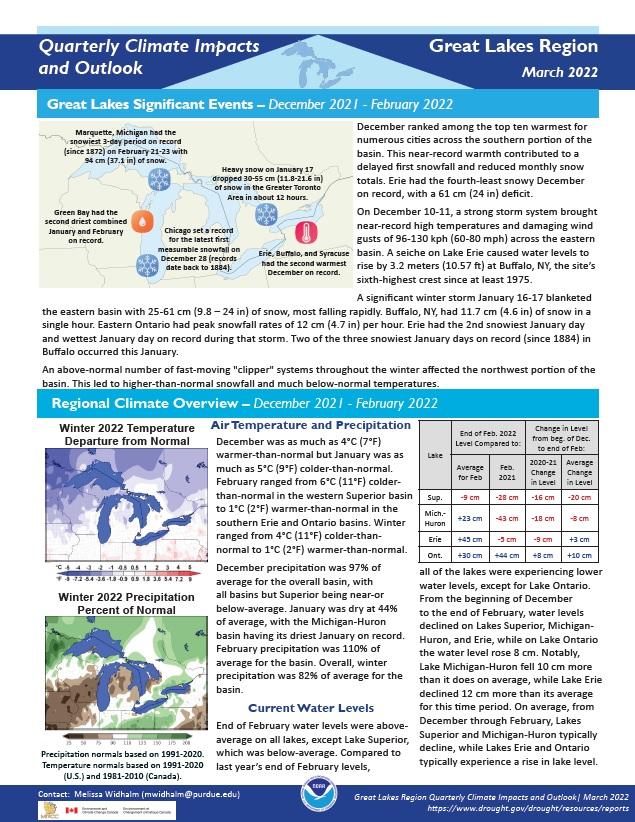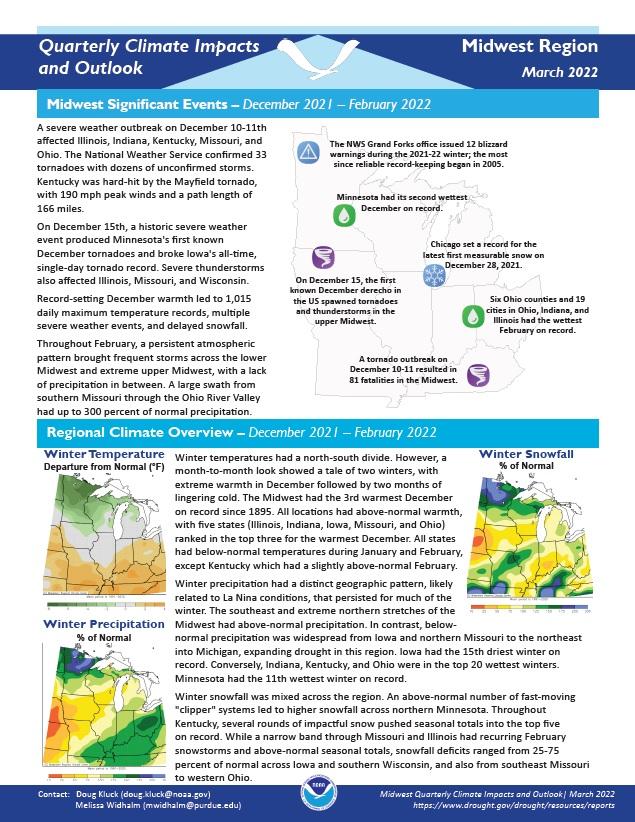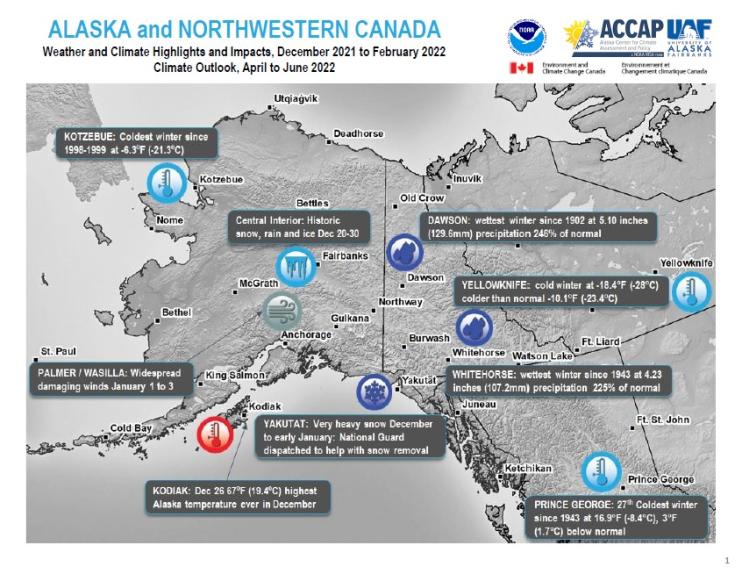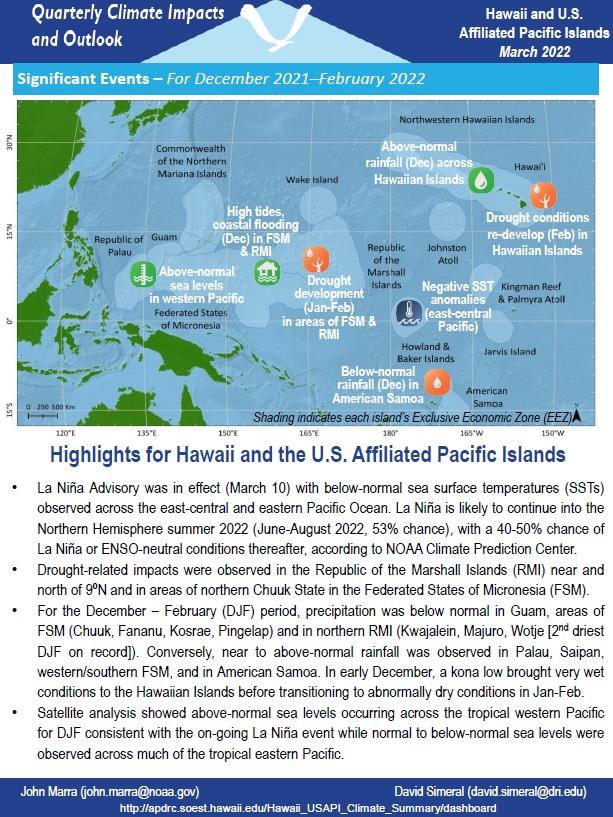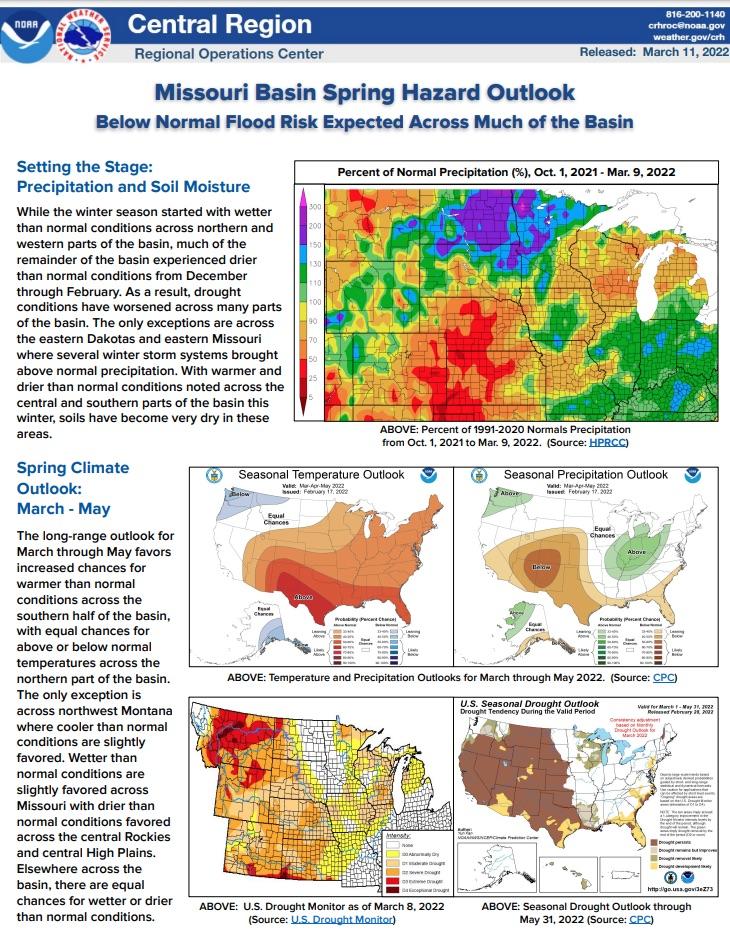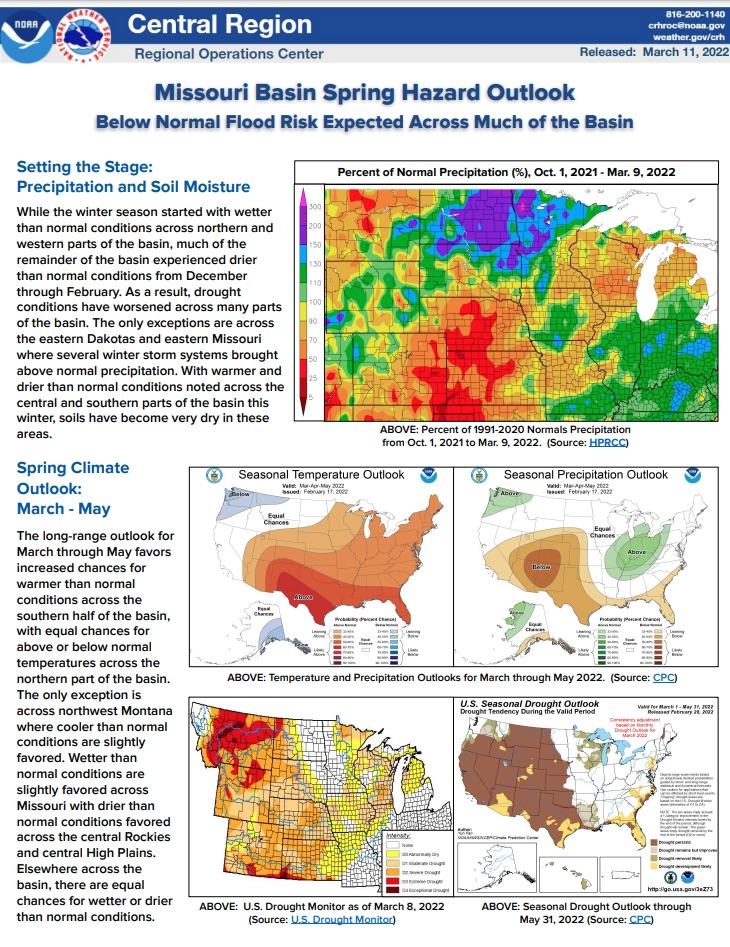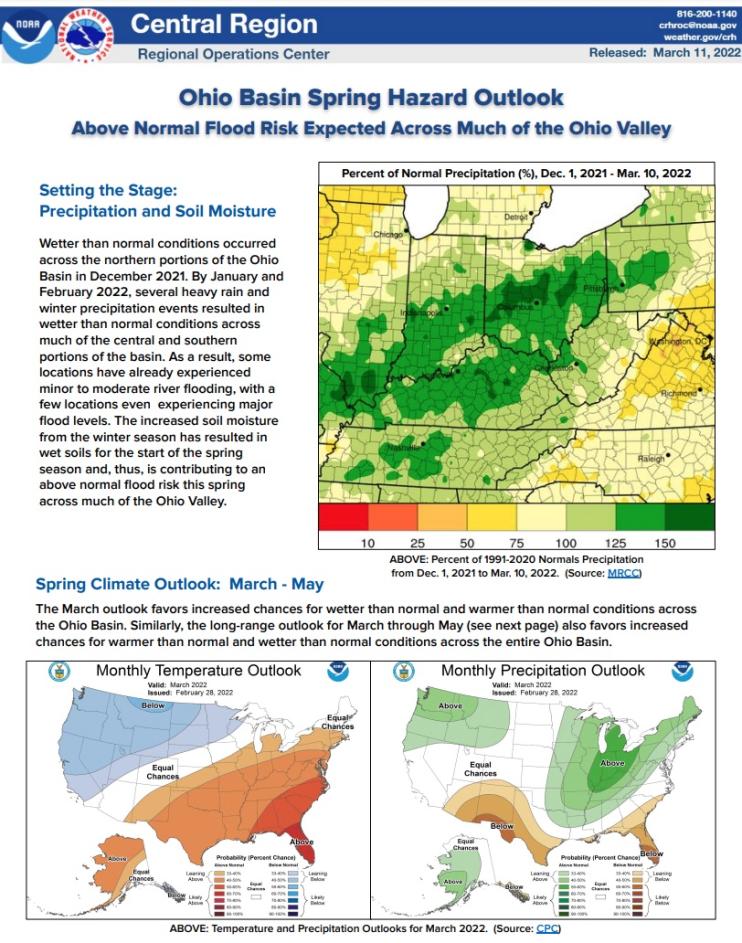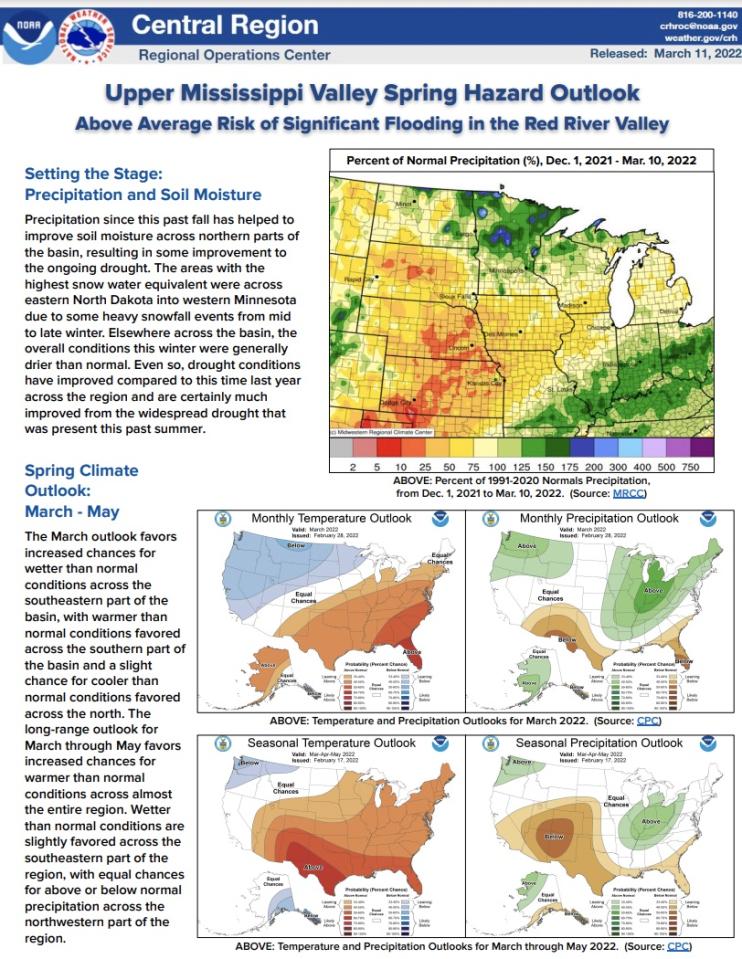Quarterly Climate Impacts and Outlook for the Northeast Region for December 2021 - February 2022. Dated March 2022.
The Northeast's winter average temperature was 0.7°F above normal, ranking in the warmest third of all years. Six states had one of their 20 warmest winters. The Northeast saw 88% of normal winter precipitation, ranking in the middle third of all years. This winter was among the 20 driest for four states.
Quarterly Climate Impacts and Outlook for the Southeast Region for December 2021 - February 2022. Dated March 2022.
Winter temperatures across the region were topsy-turvy, with December and February much above average and January slightly below average. Precipitation was below average for much of the region this winter. However, San Juan, PR observed its wettest February on record at 11.7 inches of precipitation, more than 9 inches above normal.
Quarterly Climate Impacts and Outlook for the Great Lakes Region for December 2021 - February 2022. Dated March 2022.
Winter temperatures ranged from 4°C (11°F) colder-than-normal to 1°C (2°F) warmer-than-normal. Overall, winter precipitation was 82% of average for the basin.
Quarterly Climate Impacts and Outlook for the Midwest Region for December 2021 - February 2022. Dated March 2022.
Quarterly Climate Impacts and Outlook for Alaska and Northwestern Canada for December 2021 - February 2022, with an outlook for April - June 2022. Dated March 2022.
From December 2021 to February 2022, most of Alaska, Yukon, Northwest Territories and northern British Columbia received record to near record precipitation. Winter temperatures have been mostly below normal.
Quarterly Climate Impacts and Outlook for the Pacific Region for December 2021–February 2022. Dated March 2022.
For the December–February period, precipitation was below normal in Guam, areas of Federated States of Micronesia (FSM), and in northern Republic of the Marshall Islands. Conversely, near- to above-normal rainfall was observed in Palau, Saipan, western/southern FSM, and in American Samoa. In early December, a kona low brought very wet conditions to the Hawaiian Islands before transitioning to abnormally dry conditions in January and February.
The National Weather Service developed 2022 Spring Hazard Outlooks in coordination with NOAA's National Centers for Environmental Information (NCEI) and National Integrated Drought Information System (NIDIS); High Plains Regional Climate Center; Midwestern Regional Climate Center; U.S. Department of Agriculture; and National Interagency Fire Centers' Geographic Area Coordination Centers. This outlook highlights the various spring hazards that could occur and potential impacts across the Mountain West.
The National Weather Service developed 2022 Spring Hazard Outlooks in coordination with NOAA's National Centers for Environmental Information (NCEI) and National Integrated Drought Information System (NIDIS); High Plains Regional Climate Center; Midwestern Regional Climate Center; U.S. Department of Agriculture; and National Interagency Fire Centers' Geographic Area Coordination Centers. This outlook highlights the various spring hazards that could occur and potential impacts across the Missouri River Basin.
The National Weather Service developed 2022 Spring Hazard Outlooks in coordination with NOAA's National Centers for Environmental Information (NCEI) and National Integrated Drought Information System (NIDIS); High Plains Regional Climate Center; Midwestern Regional Climate Center; U.S. Department of Agriculture; and National Interagency Fire Centers' Geographic Area Coordination Centers. This outlook highlights the various spring hazards that could occur and potential impacts across the Ohio River Valley.
The National Weather Service Central Region developed 2022 Spring Hazard Outlooks in coordination with NOAA's National Centers for Environmental Information and National Integrated Drought Information System (NIDIS); U.S. Department of Agriculture; High Plains Regional Climate Center; Midwestern Regional Climate Center; and National Interagency Fire Center's Geographic Area Coordination Centers. This outlook highlights the various spring hazards that could occur and potential impacts across the Upper Mississippi Valley.

